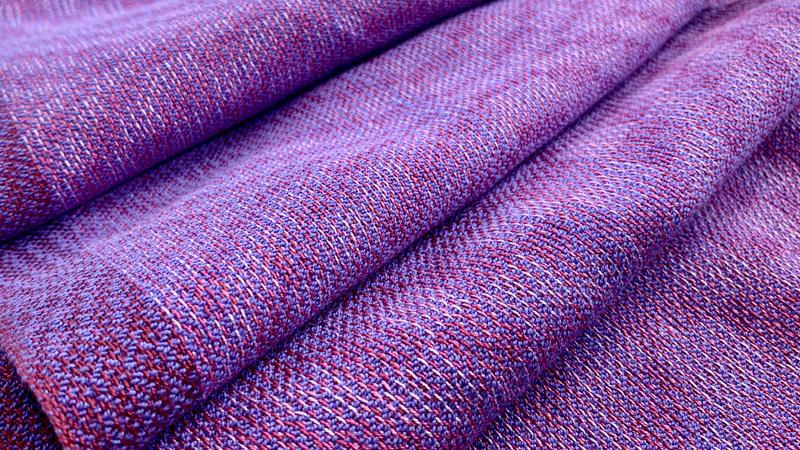Last year, I became a member of the Dutch Weaving Association Weefnetwerk. Unfortunately, I have not yet had the change to meet other members as physical get-togethers were cancelled in 2020 for obvious reasons. I am happy that I became a member of the Weefnetwerk nonetheless. Not only is the quarterly magazine a joy to read, but to my surprise, they also sent me a lovely gift by by mail sometime in November 2020. To make up for the lack of physical activities, each member received a colourful set of weaving cotton. This was such a nice surprise — the perfect present for every hand weaver.
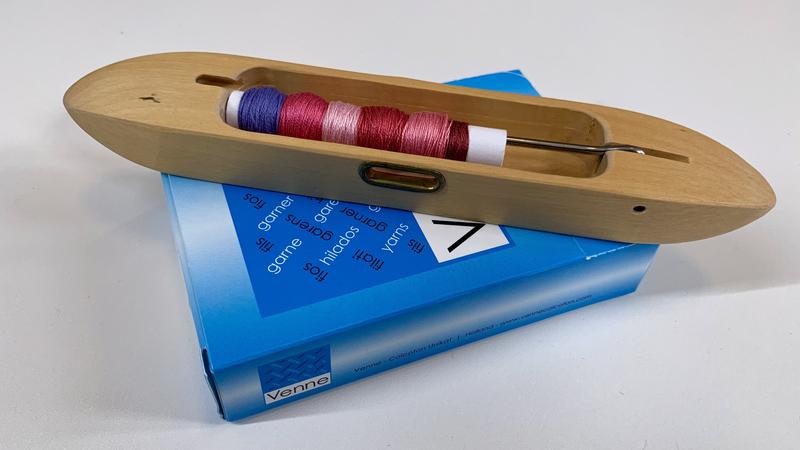
Challenge accepted
The set consisted of 5 minicones with Nm34/2 — Ne20/2 mercerized cotton by Venne. Each cone contains 180 m of yarn weighing in at only 12 grams. I received a set of 5 beautiful pink shades, which happens to be my favourite color. Needless to say, this present brought a big smile to my face.
To be honest though, I was a bit overwhelmed about working with such fine yarn. I mostly work with knitting yarn or fairly thick weaving cotton and I have never gone past a warp of 8 ends per cm. This thin yarn was way out of my comfort zone. Yet, I do like a challenge and this surely qualified as one.

The Weefnetwerk added another element to this challenge. They encouraged their members to use the yarn in a 4-shaft design and enter into a contest and exposition. One additional yarn could be added to the design besides the 5 minicones. This sounded both exciting and scary. Sharing handwoven projects with fellow weavers is fun, but can be also be quite nerve-wracking. Especially a project in a new-to-me yarn. So, I took my time to come up with a design I was satisfied with before unpacking the cones.
Giving twill a try
I quickly decided I wanted to use the 5 colors in a warp and use Nm28/2 — Ne16/2 unmercerized cotton by Venne in the weft. I had cones of some colors in my stash and always had been too nervous to try them out. This seemed like the perfect opportunity. In this way, I had enough yarn to make a small scarf. The rules of the contest also allowed to submit samples, but I really wanted to make a project. Most of my sampling is done on the computer anyway. I rarely sample on the loom. Instead, I spend my time finetuning a design in weaving software until I am completely satisfied.
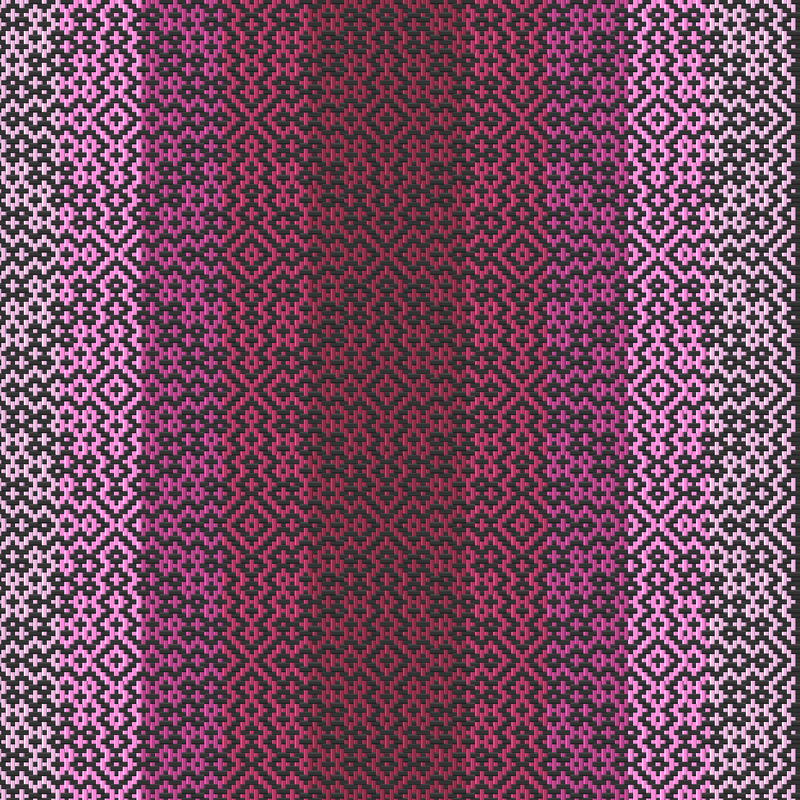
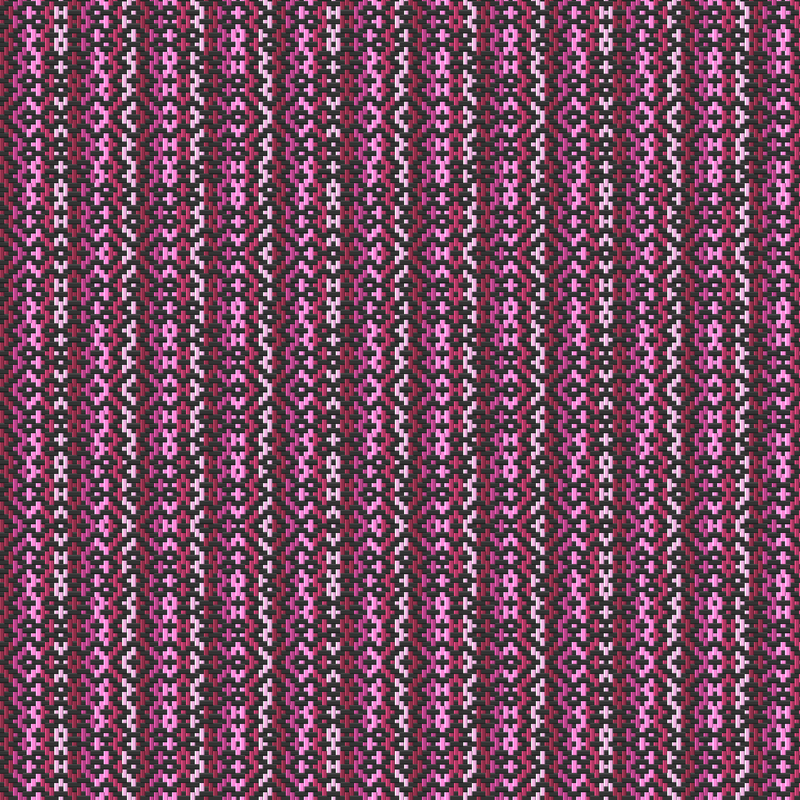

At first, I tried to make a design in advancing twill. A big challenge was to find a nice way to combine the 5 colors in the warp. I tried out designs of striped sections, alternated the colors thread-by-thread and created a gradient. Yet, I was not pleased with any of these results. The designs were nice enough, but I felt they did not do the yarn enough justice. I decided to let it rest for a while and work on some other projects instead.
Turned taquete to the rescue
Around the same time, I tried out turned taquete and this weaving technique quickly became one of my favorites. I made some projects using contrasting colors in the warp, but I became curious how turned taquete would look with a more monochromatic color palette. What if I used multiple shades of pink in the warp? I picked up the minicones again and selected four that could be alterated in the warp with the fifth color adding a border on both sides. I then set out to make a 4-shaft turned taquete design in my weaving software. Several tries and hours later, the result was a warp-wide round shape. The four pink tints interact beautifully in the center and the solid colored border gives the design a nice twist. This was what I was looking for.

How thin can you go?
Of course, I still had to face my fear of working with the thin yarn. I was quite nervous when I opened the cones and started warping. The thin yarn felt both exciting and awkward sliding through my fingers and the colors looked beautiful together as they blended in the warp. I found that threading the heddles and sleying the reed was more challenging than usual. This was partly due to the thin threads and partly due to the monochromatic color palette. I worked through this with much needed focus and concentration and then I was finally ready to weave with my choice of lilac weft.
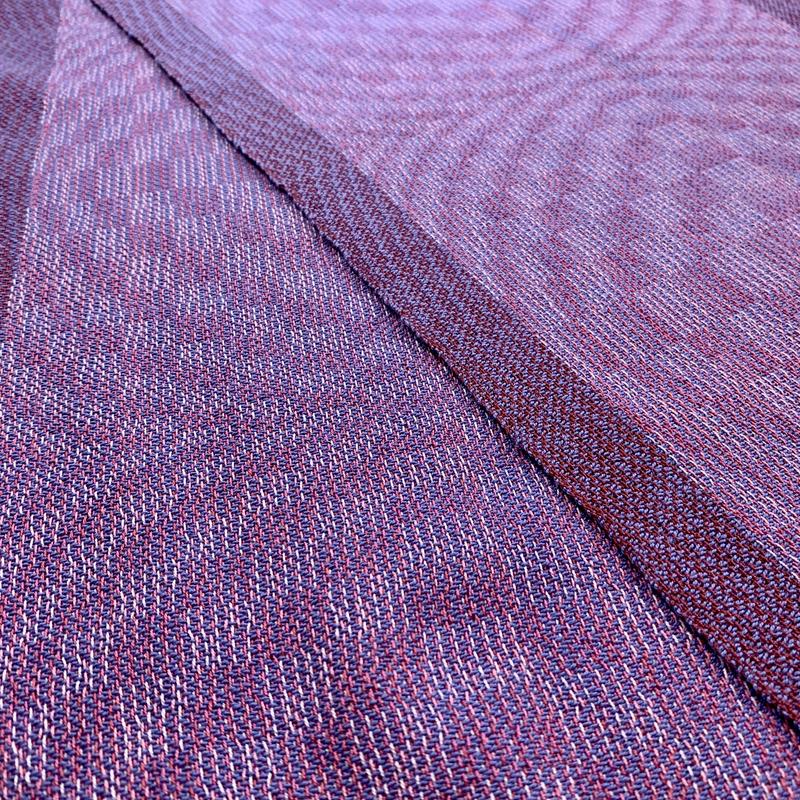

When using thicker yarn, I have to advance my warp fairly often. But weaving this scarf, I could keep on weaving. This was a new and enjoyable experience. I really liked weaving the scarf and I love the look and feel of the cotton in the finished cloth. Weaving with thin yarn turned out to be an experience worth repeating. I think knitting yarns will stay on as my go-to yarns, but thin weaving yarn is not out of the question anymore. In fact, I ordered some more cotton from Venne: some minicones in rainbow colors for a colorful warp and dark grey for the weft. I am looking forward to trying out this splash of color.

In the meantime, my Dahlias in bloom scarf is all done and ready to enter the contest. The round figures in the scarf remind me a bit of a dahlia with its abundance of petals, hence the name. It was a joy to make and I expanded my weaving comfort zone along the way. All in all, the set of weaving cotton really was a perfect present.

